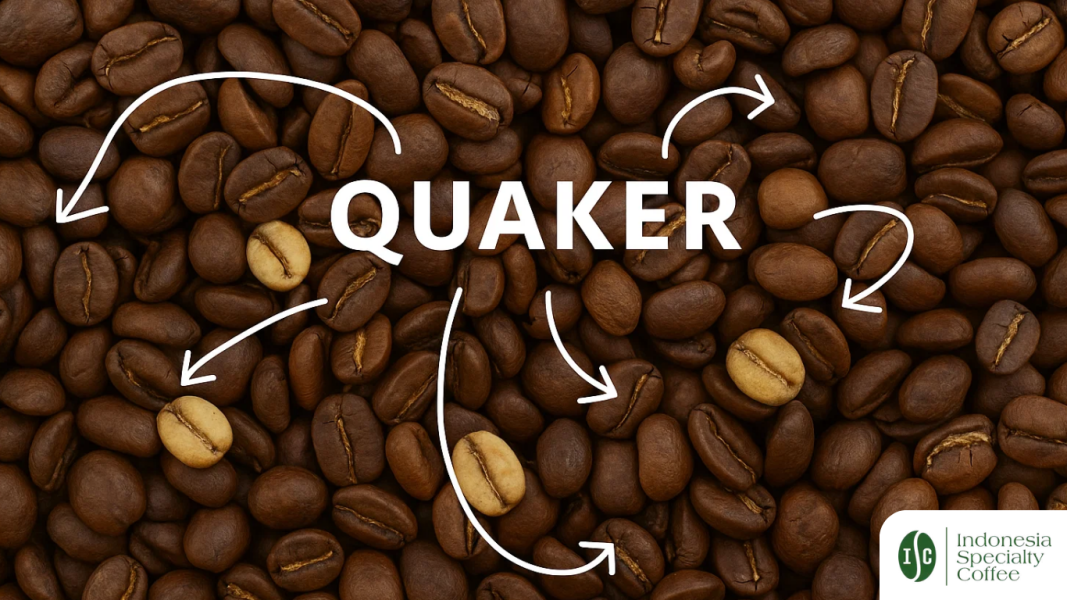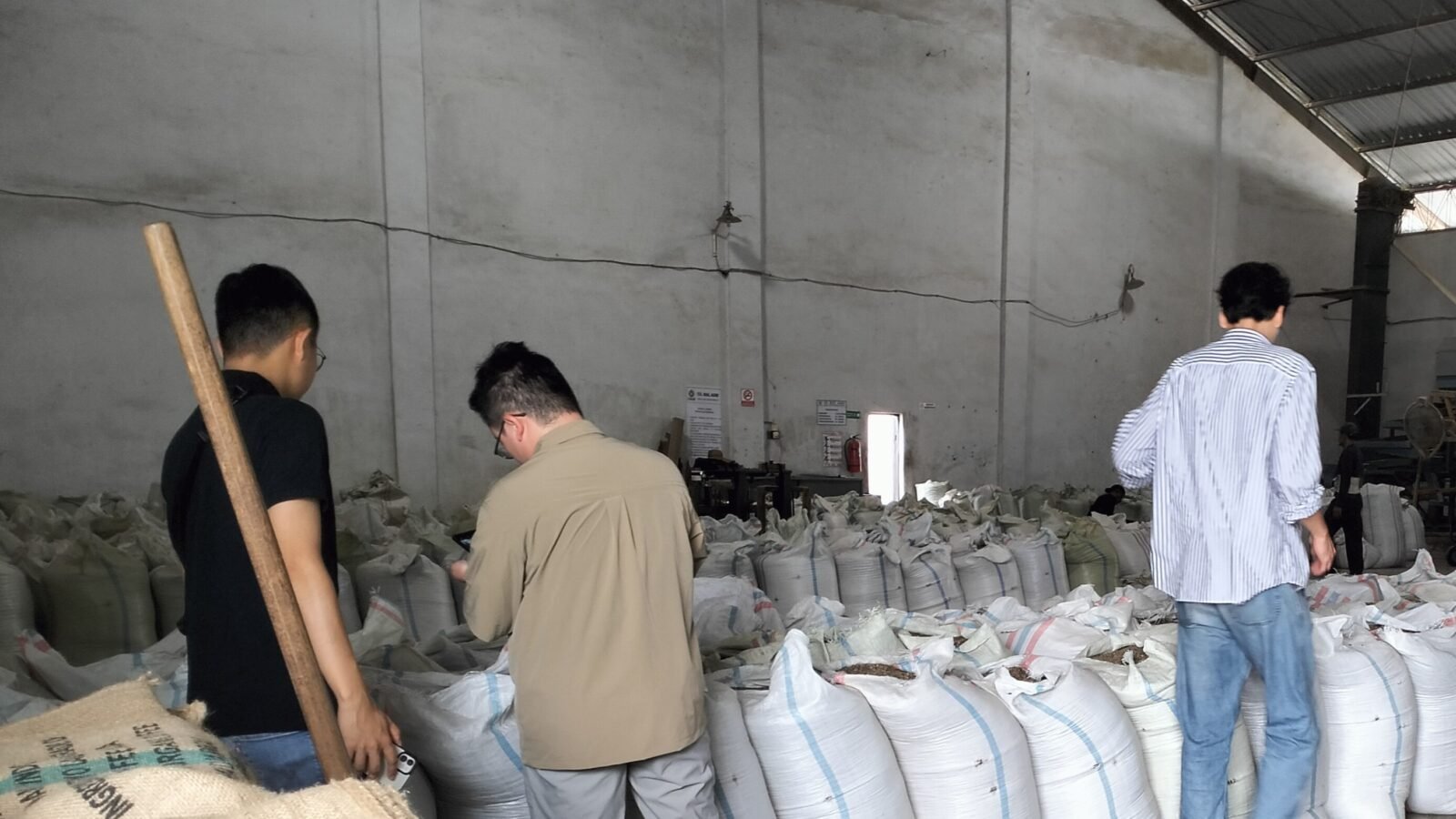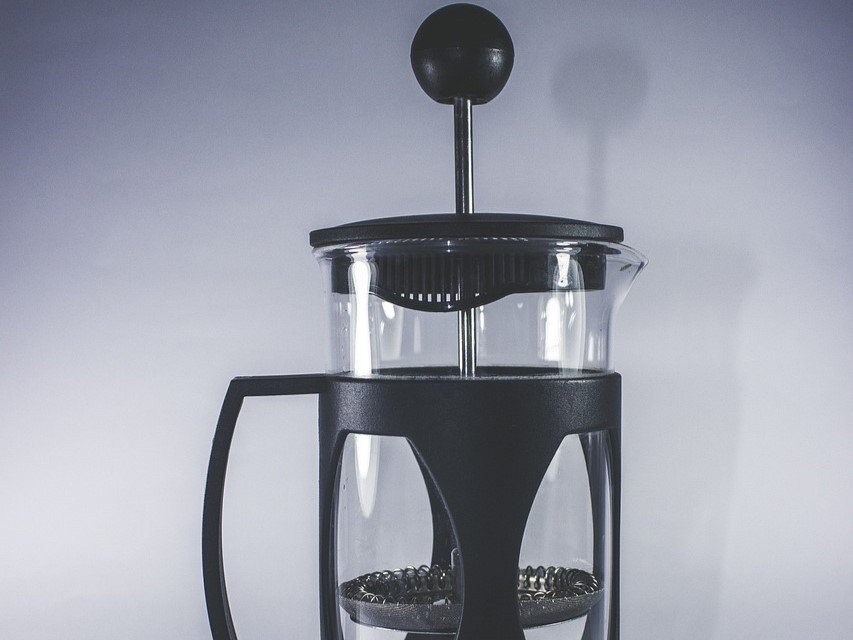When Your Coffee Tastes “Off,” But You Can’t Quite Say Why—Meet the Culprit: Quakers
You’ve roasted a beautiful batch of Gayo beans—perfect heat, perfect time. The aroma is inviting. But when you brew, something’s just wrong. The cup lacks clarity. There’s a flat, papery taste lingering. It doesn’t taste like the origin at all. This isn’t a roasting issue or bad luck. It’s most likely caused by quakers in coffee—those underdeveloped, pale beans that fail to roast properly and sneak unwanted flavors into your cup. If you’re serious about quality, recognizing and removing quakers is a must for any Indonesian coffee roaster or green bean distributor.
If you’re a coffee roaster, quality grader, or green bean distributor in Indonesia, knowing how to detect and remove quakers is not optional. It’s essential for keeping your specialty coffee consistent and internationally competitive.
What Are Quakers in Coffee? Understanding the Undesirables
In simple terms, quakers are defective coffee beans that didn’t ripen properly on the tree. Because they lack the natural sugars and lipids needed to caramelize during roasting, they stay lighter in color, even when roasted alongside fully mature beans.
🎯 Keyword alert: Quakers are a major concern in coffee quality control.
You’ll spot them right away after roasting: while the rest of your beans are chocolatey brown, quakers are pale, dull, and dry-looking—almost like they’re stuck halfway.
And yes, even one quaker in your espresso shot can dull the vibrancy of a carefully roasted origin.
Why Quakers Are a Serious Threat to Coffee Flavor and Brand Trust
Let’s be real—coffee is both art and business. A single bad cup can cost you a loyal customer. Here’s how quakers ruin your product, quietly but consistently:
☕ 1. They Destroy Flavor Clarity
Quakers introduce unpleasant notes—think paper, cardboard, raw peanut, or stale grains. These off-flavors muddy even the most carefully profiled roasts.
☕ 2. They Break Consistency
Imagine serving the same origin with two flavor profiles in one day. That’s how quakers undermine quality assurance, especially in multi-location cafés or export shipments.
☕ 3. They Hurt Specialty Coffee Standards
If you’re aiming for specialty coffee grading (like in this grading guide), quakers count as physical defects—too many, and you fall below the 80-point threshold.
Bonus: Learn how to choose Grade 1 Indonesian coffee beans to reduce defect risks early.
How to Spot Quakers in Your Roast: Practical Visual Cues

You don’t need fancy tools—just good eyes, a clean tray, and decent lighting.
👀 Look for:
- Beans that are noticeably lighter than others after roast
- A dry surface lacking sheen or oil
- Often slightly misshapen or dull
Some professionals even use UV light to identify them more quickly, as quakers reflect differently than fully developed beans.
⚠️ Pro Tip: Quakers can’t be spotted in green form easily. They usually reveal themselves after roasting.
What Causes Quakers? It Starts on the Farm
Most quakers form due to poor or uneven cherry harvesting practices. Picking unripe or immature cherries leads to underdeveloped beans, which don’t caramelize properly during roasting.
Common causes:
- Unripe harvest (green cherries)
- Drought-stressed trees
- Poor varietal management
- Rushed post-harvest drying
Want to reduce this at the source? Work with suppliers focused on quality-driven picking—especially in regions like Sumatra o Toraja where microlots are prized.
Why Indonesian Roasters and Distributors Must Know This
Indonesia is rapidly expanding its specialty coffee presence—from Aceh Gayo to Flores. But with growth comes responsibility. To compete globally, we need to match international quality control standards.
🔍 That means:
- Sorting out quakers in post-roast inspections
- Educating staff on defect recognition
- Working only with well-processed green beans
Looking for trustworthy green bean sources? Start with this guide to finding the right distributor.
Final Roast: The Hidden Risk You Can’t Ignore
In the world of coffee, details define quality. And quakers—small as they are—can make or break your reputation.
So next time you’re doing QC, ask yourself:
“Have I caught the quakers today—or are they still hiding in the roast?”
Don’t let one pale bean ruin your bold, beautiful brew. Because in specialty coffee, every bean matters.








